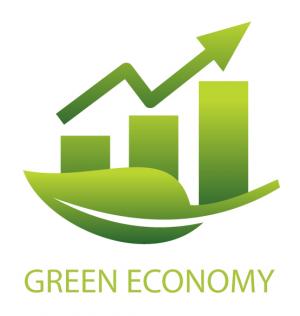San Jose Green Vision
Description
Source: Shanghai Manual: A Guide for Sustainable Urban Development in the 21st Century (2010)
The San Jose clean technology strategy uses traditional business retention and attraction approaches combined with sophisticated networking of technology and governmental partnerships that are:
Providing incentives and services at every stage of growth to encourage both established clean technology companies and start-up firms to stay and grow in San José;
Incubating next-generation technologies through partnerships with local universities and the US Department of Energy?s National Renewable Energy Laboratory-backed Environmental Business Cluster;
Providing city demonstration opportunities for innovative clean technology products;
Creating opportunities for local residents to receive training for employment in clean technology industries;
Advocating for legislative changes that will support the clean technology industry's growth.
As one of the largest environmental and clean technology incubators in the United States, the Environmental Business Cluster has assisted more than 150 companies since its founding in areas such as water purification, advanced transportation, wind and solar energy, waste heat recovery, sustainability, social networking, power management and testing, and alternative fuels. The Environmental Business Cluster supported 22 companies as of August 2010.
San Jose's Green Vision programme provides goals and milestones so the U.S. city of one million can leverage the Silicon Valley's leading base of technology and business model innovation in the creation of clean technology economic development. In addition to partnering with a nationally supported technology innovation center, the Environmental Business Cluster, San Jose tracks the number of local clean technology sector jobs and has set longer-term job creation goals for the city's clean technology sector. San Jose has attempted to utilize a number of operational tactics for supporting clean technology industries by making its buildings, land and operations open to pilot project collaboration, as well as matching smaller clean technology and energy efficiency companies with contract opportunities provided by the city's many large corporations.
SDGS & Targets
Goal 8
Promote sustained, inclusive and sustainable economic growth, full and productive employment and decent work for all
8.1
8.1.1
Annual growth rate of real GDP per capita
8.2
Achieve higher levels of economic productivity through diversification, technological upgrading and innovation, including through a focus on high-value added and labour-intensive sectors
8.2.1
Annual growth rate of real GDP per employed person
8.3
Promote development-oriented policies that support productive activities, decent job creation, entrepreneurship, creativity and innovation, and encourage the formalization and growth of micro-, small- and medium-sized enterprises, including through access to financial services
8.3.1
Proportion of informal employment in total employment, by sector and sex
8.4
Improve progressively, through 2030, global resource efficiency in consumption and production and endeavour to decouple economic growth from environmental degradation, in accordance with the 10-Year Framework of Programmes on Sustainable Consumption and Production, with developed countries taking the lead
8.4.1
Material footprint, material footprint per capita, and material footprint per GDP
8.4.2
Domestic material consumption, domestic material consumption per capita, and domestic material consumption per GDP
8.5
8.5.1
Average hourly earnings of female and male employees, by occupation, age and persons with disabilities
8.5.2
Unemployment rate, by sex, age and persons with disabilities
8.6
8.6.1
Proportion of youth (aged 15-24 years) not in education, employment or training
8.7
Take immediate and effective measures to eradicate forced labour, end modern slavery and human trafficking and secure the prohibition and elimination of the worst forms of child labour, including recruitment and use of child soldiers, and by 2025 end child labour in all its forms
8.7.1
Proportion and number of children aged 5‑17 years engaged in child labour, by sex and age
8.8
Protect labour rights and promote safe and secure working environments for all workers, including migrant workers, in particular women migrants, and those in precarious employment
8.8.1
Fatal and non-fatal occupational injuries per 100,000 workers, by sex and migrant status
8.8.2
Level of national compliance with labour rights (freedom of association and collective bargaining) based on International Labour Organization (ILO) textual sources and national legislation, by sex and migrant status
8.9
By 2030, devise and implement policies to promote sustainable tourism that creates jobs and promotes local culture and products
8.9.1
Tourism direct GDP as a proportion of total GDP and in growth rate
8.10
Strengthen the capacity of domestic financial institutions to encourage and expand access to banking, insurance and financial services for all
8.10.1
(a) Number of commercial bank branches per 100,000 adults and (b) number of automated teller machines (ATMs) per 100,000 adults
8.10.2
Proportion of adults (15 years and older) with an account at a bank or other financial institution or with a mobile-money-service provider
8.a
8.a.1
Aid for Trade commitments and disbursements
8.b
By 2020, develop and operationalize a global strategy for youth employment and implement the Global Jobs Pact of the International Labour Organization
8.b.1
Existence of a developed and operationalized national strategy for youth employment, as a distinct strategy or as part of a national employment strategy
SDG 14 targets covered
Deliverables & Timeline
Resources mobilized
Partnership Progress
Feedback
Action Network


